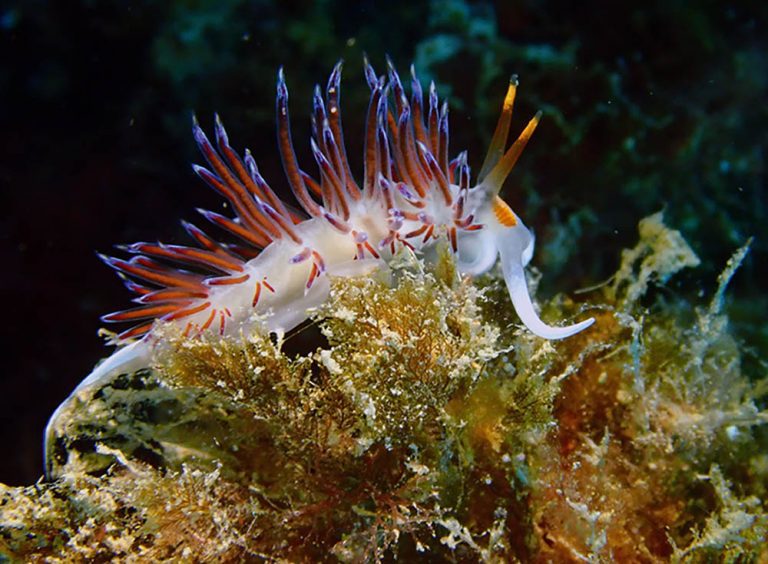SPAIN DIVER
Rust, Flora & Fauna
STEVE DOVER has been diving La Manga – the Sandbar of the Minor Sea – and is a convert to the region’s fiercely protected attractions
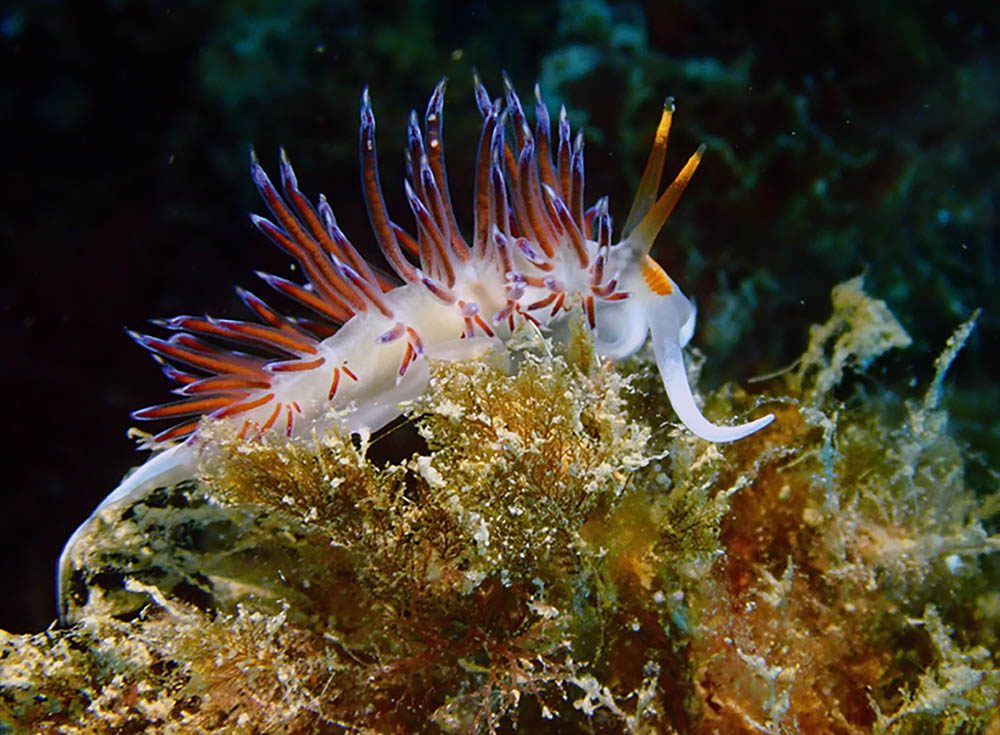
Nudibranch in the marine reserve.
The longshore drift of La Manga in the region of Murcia is a natural phenomenon that has largely been transformed into a Spanish holiday resort. Stretching 13 miles from Cape Palos to Torre de la Horadada,
this narrow spit of sand would once have been a major turtle-nesting site in the Mediterranean – if not the largest of the northern Mediterranean coastline.
Development starting in the 1960s and growing through the ’70s and ’80s put paid to that. However, La Manga is virtually on the doorstep of UK divers, and conservation trends have grown significantly since those developments. The Spanish authorities take protection of their marine heritage very seriously.
This location has it all for divers across a cross-section of capabilities and tastes, and it is the perfect location for fledgling introductions to the undersea world. There are deep wrecks for the tekkies; wrecks to be found and recorded by avid archaeologists; shallow grassy slopes, ravines and swim-throughs for bibbling snappers and a number of dive-centres staffed by enthusiastic experts who work more collaboratively than I have experienced elsewhere in the world.
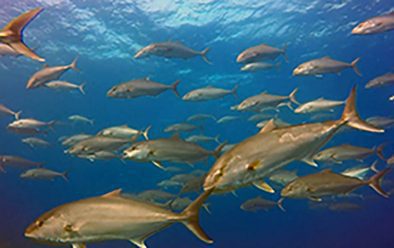
All sites hold the promise of varied and quite prolific fish populations. This is thanks to the introduction of large and protected marine reserves in 1995 – the Reserva Marina de Cabo de Palos e Islas Hormigas.
La Manga was the most recent destination for my now-annual pilgrimage with my buddy. We joined the British Sub-Aqua Club in 1981 and, several wetsuits and three drysuits later, remain members and enjoy every moment we spend under water.
We look for locations that appear unlike the norm and hold interest on various fronts. When Brian first sent me the plan for visiting mid-to-northern Spain, I was dubious. I had dived slightly further south in Andalucía, and had found it underwhelming and fished out.
The information from Ed, who runs Scuba Murcia, changed my perception. He provided details of the marine reserve and, within that, the more challenging exploration of the known protected wreck-sites.
Diving is strictly monitored. Marine reserves and the wrecks, flora and fauna within them are strongly protected and actively policed by local and federal authorities. A foot put wrong by an operator or diver meets what I consider proportionate punishment – passport taken and detention prior to trial!
The UK could learn much from the Spanish discipline here. The authorities have been bold enough to apply stringent legislation to preserve the marine environment and marine archaeology, and the evidence under water suggests that their approach is working.
We had to get permission from both the local and federal authorities to dive the known wrecks. Scuba Murcia made the case for us on the basis of our experience of wreck research and preservation from our collective past, and we passed the test.
We had made our requirements clear and were introduced to our winged-up twin steel 12s with Hogarthian rigs. Day one started with an assessment and rig-adjustment dive.
A five-minute boat-ride from the marina at Cape Palos brought us to the dive-site in the marine reserve beneath the rocky outcrop on which sits the last manned lighthouse in Europe.
There was talk of Mola mola and large grouper, but while we spotted only the flailing top fin of a sunfish at the surface, our 20m dive rewarded us in other ways.
Swaying, translucent green seaweed and grasses glowing in the sunlight that penetrated the clear water formed an inviting underwater landscape, sculpted by the massive boulder and rocky-outcrop formations. In and out of the grasses flashed numerous fish, including a great number of cuckoo wrasse resplendent in their rainbow liveries.
Look closely and bright blue nudibranchs could be seen, while lifting the eyes revealed grouper and snapper and even a lonesome barracuda. Ed also led us through a cavernous swim-through beneath the rock formations.
Brian and I tried out the Hogarthian set-up and simulated out-of-air situations with both of us acting as donor and recipient. It was a very satisfying and scenic 60-minute dive, after which I shed 4kg of lead for the rest of the trip.
Dinner and a brilliant red wine from the Duerro river region of Spain while overlooking the beach ended our first day enjoyably – 12 euros for the wine and 20 for fresh tapas, perfecto!
Appeared in DIVER June 2019
The naranjito lies 39m down, a seven-minute boat ride from the harbour at Cape Palos. This ship – the name means “Little Oranges” – was carrying a full but slightly unstable cargo of Spanish citrus fruit.
As the swell of a storm resonated her hull on the evening of 12 April, 1946, the mass of orange boxes dislodged in the holds, which resulted in an irreversible list and a sinking so swift that several of the crew were lost.
The wreck sits upright on a seabed that slopes away at a slight gradient – stem to stern. It was a gentle slope to have settled on for an avoidable, tragic wrecking. The wreck is buoyed and the rules in the area are that unless there is an emergency you descend on the buoy- or shotline, and return the same way to the surface.
As there are only convection currents to cope with, this forces a healthy “plan the dive – dive the plan” discipline.
We dropped down the buoyline. Convection. In the water column this causes a thermocline, a confliction of water of clashing temperatures.
It’s a hazing of visibility for the diver passing through.
Entering the water off the stern platform in my 5mm wetsuit had been a pleasant immersion in water at 26°C. Dropping out of the shimmer of the thermocline at 23m found us in 13°!
Had I known this, I would have paid the excess airline baggage charge and brought my drysuit.
Visibility at around 15m soon brought the wreck into view as we dropped near the bow right onto the hold winch-gear. The wreck is pretty well intact but wholly colonised by marine life, either hiding within its structure or shoaling around it.
Clinging to it were many anemones. I spotted a large moray eel hiding below a steel bulkhead plate and a large conger not far away in a ventilation cowl. It looked as if it had been kicked in the jaw, so random were the angles of its sharp and forbidding teeth.
It looked melancholy, in a Marvin the Android way. Can there be such a thing as a chronically depressed conger eel?
We made our way towards the stern and dropped under the bridge structure to swim through the holds, emerging up onto the deck. Further back a large opening took us into the engine-room, where the main features are the giant triple-expansion engine and boilers – all brass valves and gauges intact.
There’s a large opening in the port side of the engine-room. Our instructor Ed adopted flailing arm gestures, and once we had established that there was nothing wrong with him we followed the direction of the flails and saw flying across the opening not one but two giant sunfish – the Mola! Spectacular to see, but sadly too swift to catch on camera.
A quick about-turn from the stern and we returned over the top of the bridge; across the front holds and back to the buoyline. It was a thermal relief to rise above the thermocline to our first stop at 12m, then up through 9, 6 and finally 3m.
On the all-clear we arrived at the surface in the sun to find the dive-boat right where we needed it, and the lift-platform within half a dozen flips of the fins. I wouldn’t like to attempt a ladder with the twin steel 12s, that’s for sure.
The next day we dived the Carbonero, named by local divers for the coal cargo she was carrying. Her real name was the Lilla, and she was a 90m Italian tramp that strayed into the periscope sights of a U-boat on 13 October, 1917, five miles off Cape Palos.
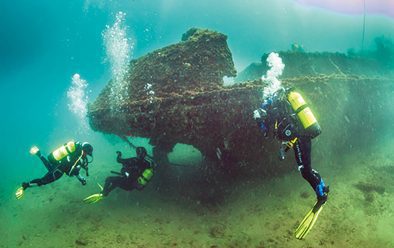
Roughly upright on a seabed 45m deep, the wreck’s superstructure rises to 35-32m. The defining and unmissable characteristic is where the torpedo struck amidships, causing the ship literally to break in two.
The skipper of the dive-cat criss-crossed the site to get position while we kitted up. When they dropped the shot, I noticed that the vessel was still moving.
I should perhaps have said something, because there’s a high risk of the shot drifting off-mark if the boat is still proceeding.
In we stepped, and down we went. Descending past the thermocline and into cold water again, I noticed the vis close down as well. We appeared to drop into
a fine beige silt layer. No wreck was emerging, either. By the time we got to 40m I could clearly see the silty seabed and the end of the lonesome shot! Now I wished I had mentioned it.
As we were on 28% nitrox, I arrested our depth at 40m. Ed picked out a shadow and reeled off the line and we headed towards it. Pretty soon the great shadow of the stern loomed out of the gloom, and we popped up to deck level at 35m.
As with many wrecks, the Lilla has thrived as a man-made reef, albeit one violently placed by act of war. It teems with life. We moved through the shoals of snapper towards the bow, taking in the sights of the curving wreck and dropping into parts where safe access is allowed.
It was in one of the swim-throughs that I spotted another conger, this time in a hawser cathole. This one looked just as depressed as the Naranjito specimen.
We managed to reach the bow – after
a small detour into the captain’s toilet with intact lavatory bowl – at the time-point that marked our return aft.
It’s an odd thing: I wouldn’t give a 70-year-old toilet a second glance on land, but found in a sunken ship it becomes an object of wonder, with almost treasure-like allure!
Once at the stern we quickly picked up the reel and held depth to 35m to the shot. Following 25 minutes of stops we were swiftly retrieved via lift by the boat, and reflected on another great dive on the journey back to port.
Our final dives on this brief trip were in the sparkling waters of Islas Hormigas Marine Reserve, at a site called Bajo de Fuera. We had a depth of 37m for both dives and nice long dive times of 65 and 48 minutes respectively – with a healthy break and lunch in between.
There’s a fairly prominent lighthouse on the main Isla Hormigas but this visible outcrop is surrounded by submerged peaks rising fairly sheer from more than 90m to just 2-3m below the surface.
Bajo de Fuera, the largest of these, is twin-peaked, with a shallow saddle between them. Its name translates to “small of outside” and I think this means outside the main island.
The hapless skippers and their crews that missed this subtlety will have seen the lighthouse but perhaps been blissfully unaware of what it was telling them – that is: “Steer well clear of this area, not just me, as I’m the only one you can see”.
We dropped down the permanent buoyline and drifted out on the landward side of the massive peak, slowly drifting onto the battered remains of several wrecks. I say several because it really is a massive debris-field that stretched on and down past our planned limit of 37m.
On the first dive I drifted across a completely intact bronze telegraph, and on the second plucked a perfect brass porthole from the seabed. These artefacts in the early 1980s were the stuff of dreams to wreck divers. Times have changed, and for the better, so these were left in place for many other divers to experience.
From 37m we traversed slowly up and around the peak, taking in the great shoals of fish and the many massive and friendly grouper. I’ve never seen so many grouper in a single dive as I saw on each of the two we did at this site.
Several morays crouched in bright green seagrass hideaways, and cuckoo and rainbow wrasse darted across our sights.
The level of life that has bounced back since the creation of the reserve in 1995 is testament to such initiatives.
The sheer drop-off on the seaward side is as majestic as any coral-festooned face in the Red or Coral Seas.
Slightly more foreboding too, as the rock drops in massive buttresses into a deep gloom. And you know there are sleeping shipwrecks down there.
I felt as if I had touched the tip of an underwater archaeological iceberg right on our collective European doorstep. There’s huge opportunity, especially for clubs with a cross-section of abilities and qualifications, to carry out wreck-finding and archaeological research.
There are many more wrecks to be found in La Manga’s coastal waters at various depths.
Many are from the world-war eras, but a look at the charts, the proximity of the ancient port of Cartagena and the power-shifts between Islam and Christianity over the centuries (not to mention the Romans – what did they do for Spain?) suggest that a wealth of archaeological remains lie waiting for dive expeditions to find.
Red Sea? Maldives? Great Barrier Reef? Or a journey of potential discovery and breakthroughs? I know which I’d pick.
FACTFILE
GETTING THERE> Steve & Brian flew with easyJet from Gatwick to Murcia-Corvera airport, with a 23kg baggage allowance.
DIVING> Scuba Murcia, scubamurcia.com
ACCOMMODATION> Hotel Entremares, entremares.es, but there are cheaper options along the La Manga strip.
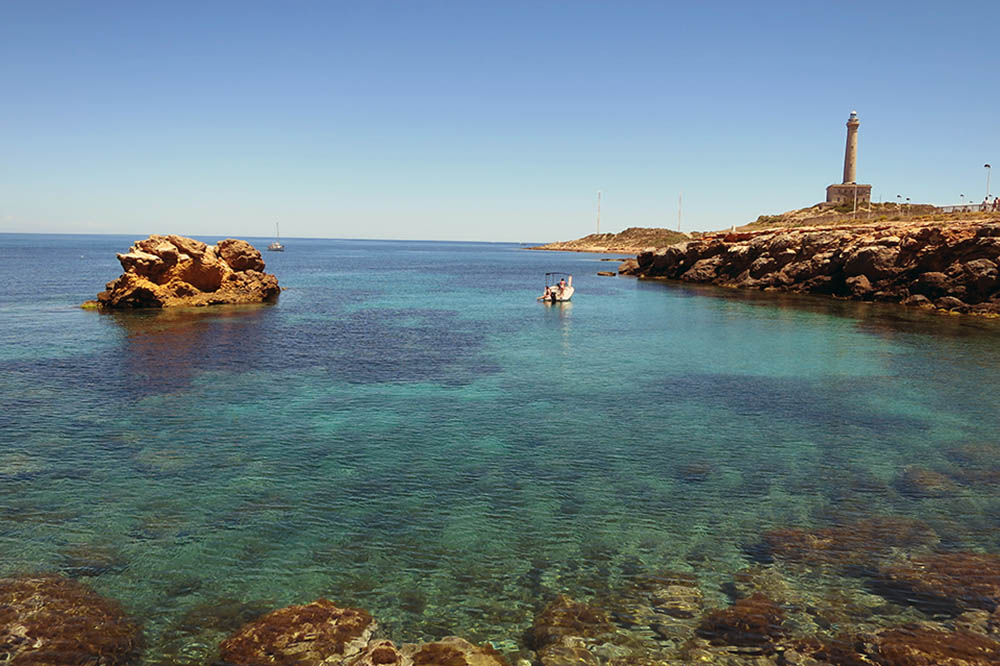 WHEN TO GO> Generally in the summer months.
WHEN TO GO> Generally in the summer months.
MONEY> Euro.
PRICES> Return flights cost £270, return taxi transfers 50 euros. Hotel Entremares cost 100 euros per night for sea views and kingsize rooms. Diving over five days cost the pair 330 euros each, including specific kit requirements.
VISITOR Information> murciaturistica.es
